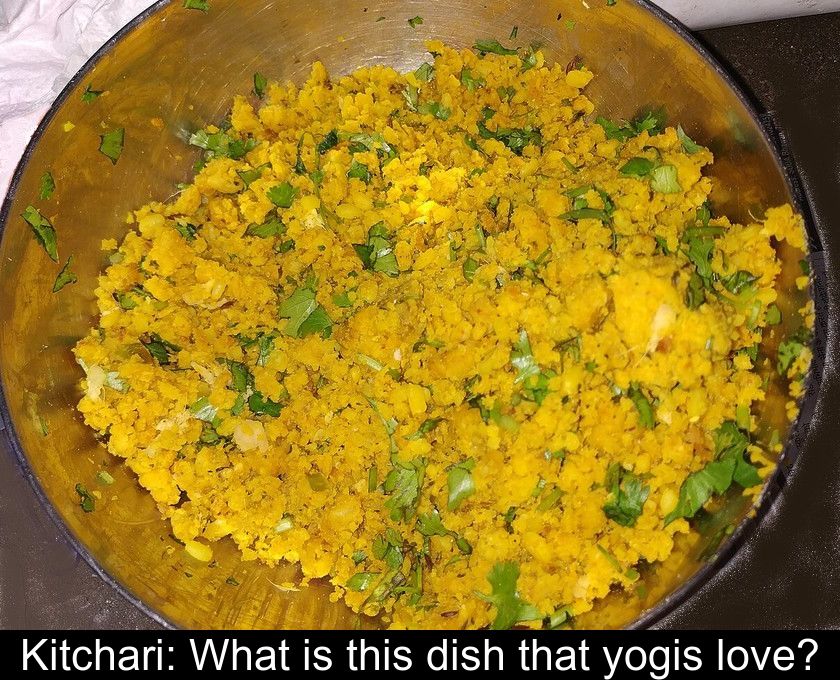Kitchari: What Is This Dish That Yogis Love?
People who practice hatha yoga are often interested, directly or indirectly, in traditional Indian medicine or Ayurveda. In this ancient medicine, diet plays a crucial role in restoring the balance between body and mind. One of the iconic specialties of the Ayurvedic diet is kitchari, a comforting dish that is particularly recommended for consumption in autumn.
A great classic of Ayurvedic cuisine
Kitchari is one of the recipes you are most likely to find on websites and blogs dedicated to yoga and traditional Indian medicine. This specialty, sometimes nicknamed "the yogis' detox dish," perfectly illustrates the principles of Ayurveda.
Ayurvedic cuisine involves choosing the right ingredients, the right seasonings, and the right consistency to restore the body's balance. It distinguishes 6 main tastes (sweet, salty, sour, bitter, spicy, and astringent) and recommends including all six in daily meals.
Indeed, Ayurvedic medicine considers that regularly eating the same tastes, for example, the sweet or salty flavors typical of junk food, disrupts the metabolism and promotes cravings for unhealthy foods.
The Ayurvedic diet also advocates eating seasonal vegetables and adapts the ingredients of these recipes according to the time of year. In autumn, Ayurveda advises favoring root vegetables that grow underground, such as carrots, sweet potatoes, or beets, and cooking warm and digestible dishes with a creamy texture.
An ideal specialty for autumn
A staple of traditional Ayurvedic cuisine, kitchari is the ideal dish for autumn because it is warm, digestible, and comforting.
In this season where the Vata dosha dominates, meaning the Air energy that promotes instability, this preparation helps to feel better by providing comfort and grounding.
Ayurveda describes this preparation as a "heavy" dish. But rest assured! This term does not mean it is indigestible. It simply helps one feel "more stable" and "more grounded," without burdening the digestive system.
Ingredients with multiple virtues
Now, you are probably wondering what this famous Indian dish, so beneficial in autumn, is made of... Traditionally, kitchari refers to a mixture of basmati rice and mung beans spiced up with various spices.
Since mung beans or mung dals are not easy to find in France, they are sometimes replaced by red lentils in some simplified recipes.
In Ayurvedic cuisine, each ingredient has nutritional benefits but also benefits for restoring the balance between the three doshas (Vata, Pitta, and Kapha). For example, mung beans are astringent and help eliminate toxins. Ghee, which is clarified butter, is also used as it is more digestible than regular butter.
That is why Kitchari as a whole is often presented as a detox dish... According to the principles of Ayurveda, this dish also has the advantages of being:
• rich in plant proteins and nutrients.
• easy to digest.
• favorable to the balance of the three doshas.
• beneficial for everyone regardless of your Ayurvedic profile and age.
An easy-to-make recipe
Contrary to what one might fear, Kitchari is not a dish too complicated to prepare.
To make kitchari for two people, you need:
• one cup of basmati rice.
• half a cup of mung beans or red lentils.
• 1 teaspoon of ghee or coconut oil.
• 2 cm of fresh turmeric or one teaspoon of turmeric powder.
• 1 cm of fresh ginger.
• cumin.
• coriander.
• fennel.
• 1 teaspoon of salt.
• 4 to 6 cups of water depending on the desired consistency.
To make this dish more digestible, it is advisable to start the preparation the day before and soak the mung beans and rice overnight.
The next day, sauté all the spices in a large pot in clarified butter or coconut oil to toast them.
Add the drained rice and lentils and mix well before adding the water and salt.
Bring to a boil then let cook over low heat for at least 30 minutes without stirring. If you feel that the preparation is sticking, lower the heat and add hot water during cooking. Your dish is ready when all the ingredients are very tender.
Note: 5 minutes before the end of cooking, you can add green vegetables of your choice, for example a handful of fresh spinach leaves or aromatic herbs. You can also serve this typical Ayurvedic dish with a wedge of lemon.









